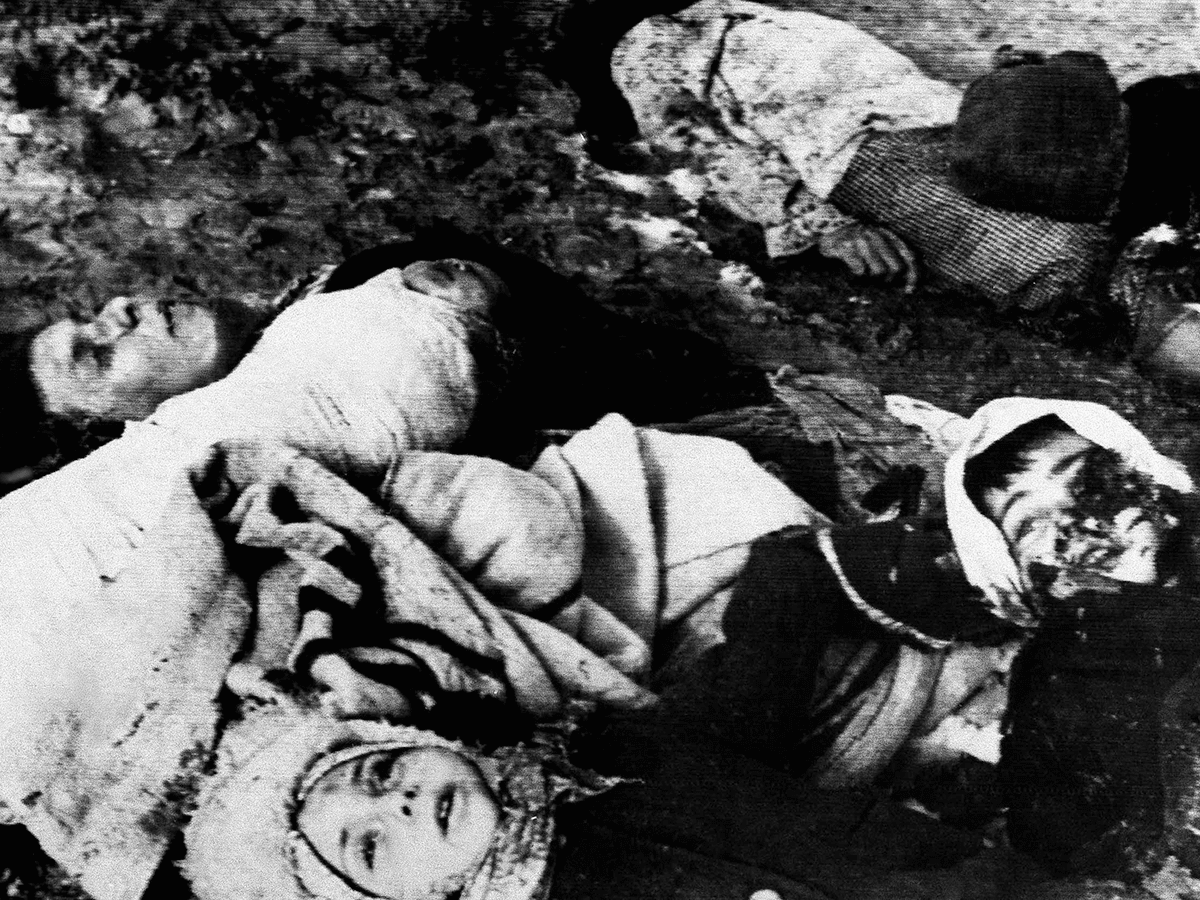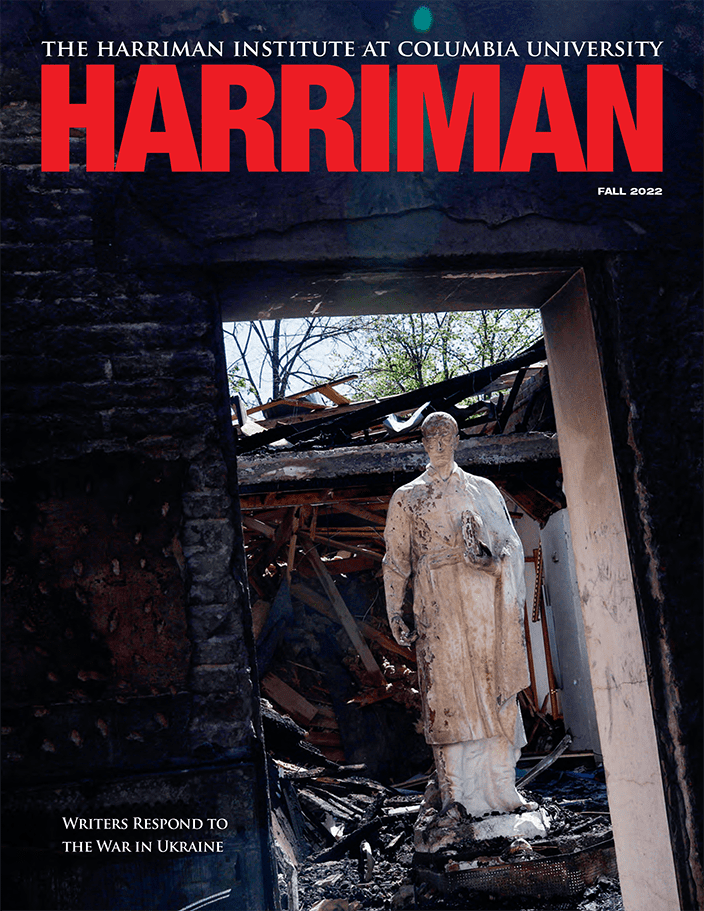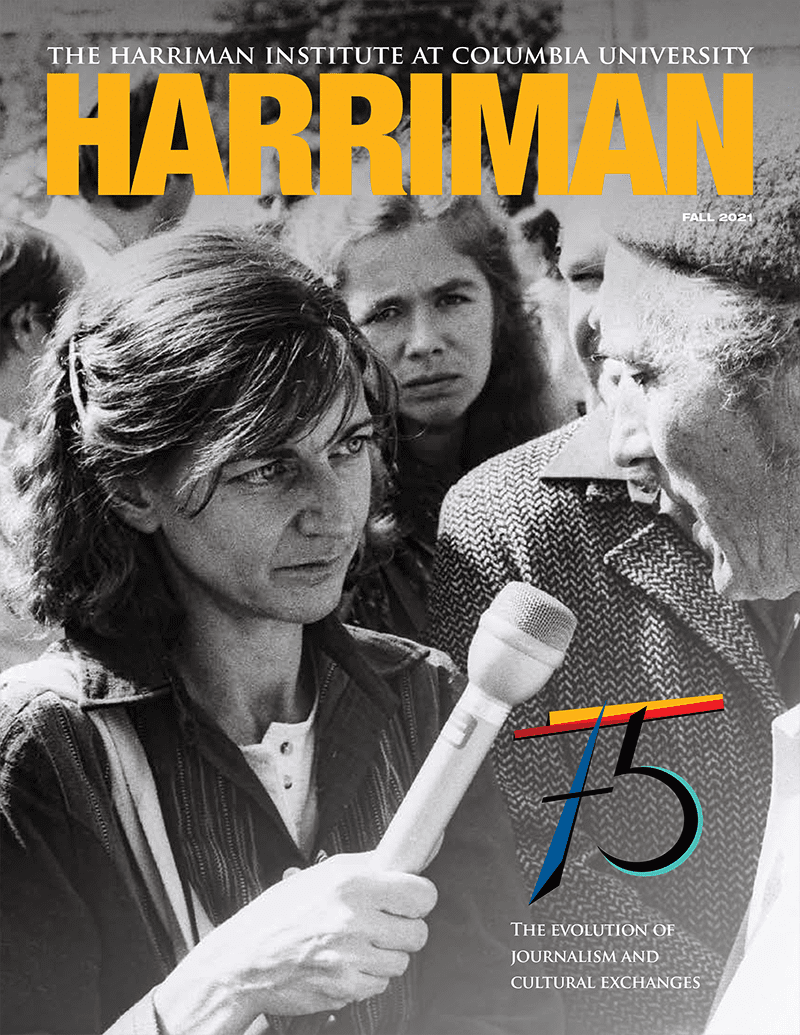The liberation of Buchenwald, Dachau, and other Nazi concentration camps in Germany during the spring of 1945 is often regarded as the beginning of the unveiling of the Holocaust, as the moment when journalists could finally report irrefutable, visual evidence of the Nazi extermination machine. Yet that moment came many months after the earliest stories and photographs were published from Nazi killing fields and death camps in Ukraine and Poland. This book excerpt recounts how journalists for Soviet media, along with a few foreign correspondents, published eyewitness accounts from Babi Yar, Majdanek, Auschwitz, and other sites, starting in early 1942.
Excerpted from Newshawks in Berlin: The Associated Press and Nazi Germany by Larry Heinzerling and Randy Herschaft, with Ann Cooper. 2024 Columbia University Press. Used by arrangement with the publisher. All rights reserved.
(Author Heinzerling, who died in 2021, was the husband of Harriman Magazine editor Ann Cooper.)
Despite censorship and controls, Soviet journalists brought the world early, concrete evidence of Nazi efforts to exterminate Europe’s Jews.
Mark Redkin stood in an icy field, his camera lens taking in the corpses scattered across a bleak landscape outside the ancient Crimean city of Kerch. Redkin, a 33-year-old Soviet Jew on assignment for TASS, the Soviet news agency, had joined paratroopers flown in on January 1, 1942, as they recaptured Kerch from Nazi invaders. Redkin pointed his camera down at several still figures by his feet. A woman and two children were lying face up, the eyes of the children still open, as if gazing lazily at clouds on a balmy summer’s day. Another body, possibly the children’s father, lay next to them.
Click.
Redkin had just made a so-called liberation photograph, which, when published a few weeks later, would give the world some of the first visual evidence of the atrocities of the Holocaust.
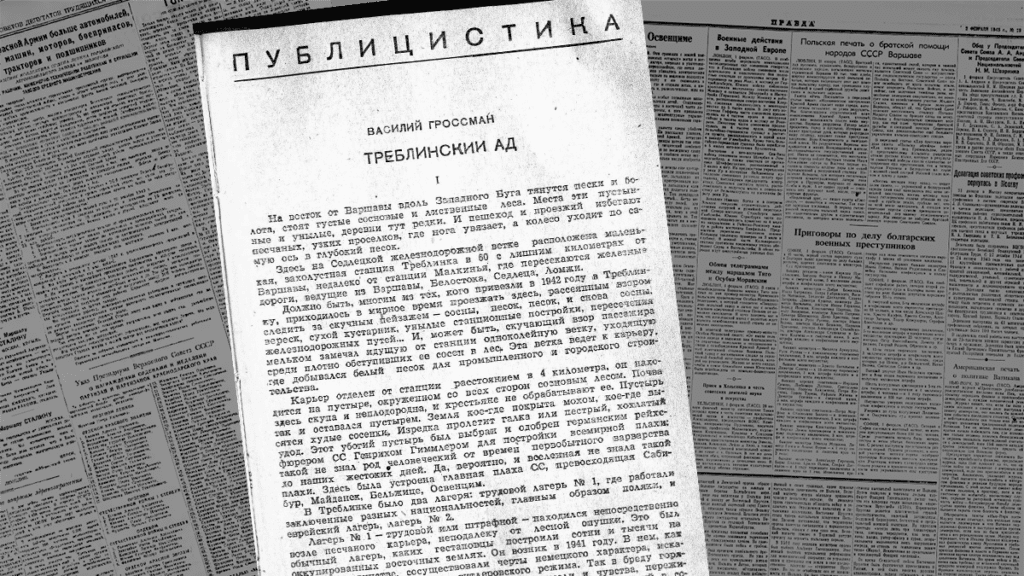
“The Hell of Treblinka,” Vasily Grossman, Znamya, November 1944: Image courtesy of the New York Public Library / Other images from Soviet media: Provided courtesy of East View Information Services, Inc.
The site Redkin photographed that day was covered with corpses of some of the 7,500 Jews from Kerch, singled out by the Gestapo and shot to death at an antitank ditch after Germany occupied the city. The “liberation” images were taken as the Soviet Army freed city after city from the Nazis, uncovering grim evidence of mass killings on an unimaginable scale. Redkin’s photo from Kerch first appeared in the Soviet newspaper Komsomolskaya Pravda on January 20, 1942, and then in the Soviet weekly magazine Ogonyok in its issue of February 1, 1942. Though some Soviet photos and stories about Nazi atrocities identified victims as Jews, Ogonyok’s caption on Redkin’s photo did not. “Hitler ordered his bandits to annihilate the peaceful Soviet population,” it read. The “Hitlerite thugs,” said Ogonyok, “showed no one any mercy.”
“The reporting was graphic, often presenting stories from firsthand accounts by the Soviet journalists who reported on the ground, perhaps foremost among them the Jewish writer Vasily Grossman.”
More than a month after Redkin took that image, the Soviet Information Bureau (Sovinformburo), a propaganda agency that supervised the work of Soviet war correspondents, approved it for release to foreign media, including Associated Press and its rivals International News Photo and Central Press. The agencies also received an image from Rostov-on-Don in southern Russia, where retreating Nazis had killed some 100 Jews. The Rostov picture, taken by an unknown photographer, shows perhaps two dozen bodies scattered on the snow-covered ground, as if mowed down by machine gun fire. All three U.S. photo services distributed the images, and of the hundreds of U.S. newspapers that would have received them, at least several dozen published them beginning February 18, 1942. Captions used information provided by the Soviets that described the victims as “mothers and children” in Kerch and “people shot by Germans” in Rostov—not as Jews.
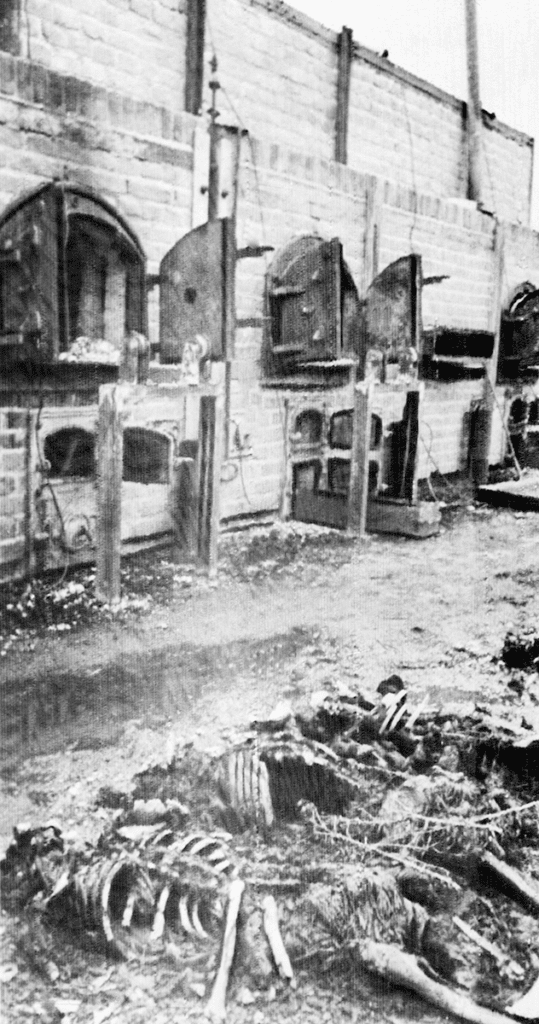
In the summer of 1944, Soviet forces were the first Allied troops to enter a Nazi death camp, at Majdanek in Poland. This photo of the ovens in Majdanek’s crematorium and the skeletal remains of victims was distributed by the Soviet photo agency to AP and others. Sovfoto via AP
The Kerch and Rostov photos from early 1942 were only the beginning of the Soviet uncovering of Nazi crimes as the Red Army pushed west to reclaim German-occupied parts of the Soviet Union. In July 1944 Soviet forces were the first to enter a Nazi death camp, at Majdanek in Poland. From there, Soviet journalists filed the first eyewitness reports and photographs of Nazi gas chambers and crematoriums used for mass murder of Jews. AP and other agencies, crediting Soviet media, wrote about the findings. A few weeks later an AP reporter produced a vivid firsthand account of Majdanek’s horrors after the Soviets arranged a trip there for foreign correspondents.
The reporting on Majdanek was published in America nine months before the Allied liberations of the concentration camps at Buchenwald, Dachau, and Bergen-Belsen in 1945, (Teenage diarist Anne Frank had died of typhus at Bergen-Belsen just weeks before its liberation.) And yet for many Americans, the freeing of those camps is often remembered as the moment the world first viewed the full horror of the Holocaust.
How did names such as Buchenwald and Dachau come to symbolize the unveiling of the Holocaust, and not Kerch, site of the first photo of a Nazi mass execution published in U.S. media in early 1942, or Majdanek, the first death camp to be liberated and described in media in 1944?
One explanation lies in the source of the Kerch and Majdanek revelations: the Soviet Union, whose communist system was widely detested and denounced in America. Though an ally in fighting Germany, the Soviet Union also was a notorious purveyor of propaganda and misinformation.1 Soviet media were tightly controlled, and foreign correspondents based in Moscow faced severe restrictions, often reduced to little more than rewriting accounts that had appeared in the Soviet press. None of that built U.S. audience trust in information from Soviet sources, and it may have even created some doubt regarding the veracity of foreign correspondents whose reporting was based on visiting sites under Soviet escort.
In the cases of Nazi atrocities, the reporting was graphic, often presenting stories from firsthand accounts by the Soviet journalists who reported on the ground, perhaps foremost among them the Jewish writer Vasily Grossman, who covered the war for the Soviet army newspaper Krasnaya Zvezda (Red Star). At war’s end, the prosecutors at Nürnberg used Grossman’s searing, deeply descriptive article, The Hell of Treblinka, as evidence in making their case for Nazi war crimes.
But while Grossman wrote about Treblinka as mainly “a slaughterhouse for Jews,” Soviet media were inconsistent in identifying the Holocaust’s victims. Some stories indicated the Nazis had targeted Jews for execution, but in other accounts Jews were listed as one of several categories of victims, all given more or less equal weight. And in some cases, likely reflecting both official anti-Semitism and official prioritizing of a unified “Soviet” identity, victims were described as “civilians,” “Soviet citizens,” or “the noncombatant population.”
“Redkin had just made a so-called liberation photograph, which, when published a few weeks later, would give the world some of the first visual evidence of the atrocities of the Holocaust.”
In its long, tortuous march to Berlin, the Soviet Union became the first of the wartime allies to expose the true savagery of Nazi occupation. And despite the limits on reporting from the Soviet side, correspondents in Moscow—including those from AP—filed some of the earliest accounts of Holocaust crimes for American newspaper readers. Along with photos the Soviets made available to AP and other agencies, these stories marked the beginning of the unveiling of the Holocaust, including revelations of mass executions by bullets and by gas.
Months later, when American and British soldiers liberated Buchenwald, Bergen-Belsen, and other camps in Germany, the corpses and living skeletons they found “seemed to convey the worst crimes of Hitler,” wrote historian Timothy Snyder in Bloodlands: Europe Between Hitler and Stalin. But, wrote Snyder: “As the Jews and Poles of Warsaw knew, and as Vasily Grossman and the Red Army soldiers knew, this was far from the truth. The worst was in the ruins of Warsaw, or the fields of Treblinka, or the marshes of Belarus, or the pits of Babi Yar.” ◆
- Perhaps the boldest lie told by the Soviet Union during the war involved the Katyn massacre, in which some 22,000 Polish military officers, police, lawyers and other members of the country’s intelligentsia were killed and buried in mass graves, including in the Katyn Forest outside the Russian city of Smolensk. Germany announced the discovery of the graves in April 1943 and charged that the Red Army had killed the victims after it marched into eastern Poland in 1939. For decades the Soviet Union denied the charge, blaming the Nazis instead. Nearly half a century later, in 1990, Mikhail Gorbachev, the last leader of the Soviet Union, acknowledged Soviet forces had carried out the killings.
Featured photo (at the top): Mark Redkin, a Jewish Soviet photographer accompanying Soviet paratroopers as they recaptured territory from the Nazis, took this early 1942 photo of several victims of Nazi executions carried out in the Crimean city of Kerch. The photo was published first in the Soviet Union, then sold to AP and other agencies for distribution to foreign media. AP Photo
Unvailing the Holocaust: Early News Clips
IZVESTIA, NOVEMBER 16, 1943, PUBLISHED AN EYEWITNESS ACCOUNT OF THE NAZI MASSACRE OF JEWS AT BABI YAR RAVINE OUTSIDE KYIV:
“The Germans forced people to undress and then methodically gathered their clothes and loaded them on trucks. In separate trucks they put underwear. Then they tore from naked people—there were men and women among them—rings and watches, if they had any, dragged them up shivering from cold or mortal terror at the edge of the gulley, and shot them. The Germans did not spend any bullets on little children, but simply hurled them alive into the gulley. Those who were awaiting their turn stood silently, or sang, or even laughed. I could see that those who laughed were already insane. And this thing lasted three days.”
PRAVDA, FEBRUARY 2, 1944, CORRESPONDENT BORIS POLEVOY DESCRIBED THE SCENE AT OSVIECIM (AUSCHWITZ), RECENTLY LIBERATED BY SOVIET ARMY TROOPS:
“Only now when Oswiecim has been liberated can one see with one’s own eyes the whole of this terrible camp, its many dozens of square kilometers steeped in human blood and fertilized by human ashes … I saw thousands of tortured people who the Red Army had saved — people so thin that they swayed like branches in the wind, people whose ages one could not possibly guess.”
ASSOCIATED PRESS, AUGUST 30, 1944, CORRESPONDENT DANIEL DE LUCE DESCRIBED HIS VISIT TO THE NAZI DEATH CAMP AT MAJDANEK IN POLAND, WHOSE GAS CHAMBERS WERE SAID TO BE CAPABLE OF KILLING 2,000 PEOPLE IN LESS THAN SEVEN MINUTES:
“Majdanek is a ghastly fantasy. It was established for murder on a vast but methodical scale. Until a group of American and British correspondents visited it today — with its six concrete vaults for execution by cyanide or carbon monoxide gas, its open air crematorium surrounded by skeletons, its mounds of human ashes mixed with manure for fertilizing cabbage patches, and its overflow burial ground in a pine woods carpeted with decaying bodies — most of these newspapermen could not even begin to imagine the proportions of its frightfulness.”
ASSOCIATED PRESS, OCTOBER 5, 1944, CORRESPONDENT EDDY GILMORE’S ACCOUNT OF THE KLOOGA LABOR CAMP IN ESTONIA, WHERE SOVIET OFFICIALS SAID 3,000 JEWS, RUSSIANS, AND ESTONIANS HAD BEEN METHODICALLY MURDERED BY THE NAZIS:
“Most of the corpses were about half burned. There were men, women and children. I saw the bodies of at least three girls who must have been under 16. In the backs of their heads you could see what looked like bullet holes. Off to the side was a stack of logs and nearby a great pile of clothing, most of which bore the stenciled Star of David and prisoners’ number. In another pile were shoes, and childrens’ shoes were numerous among them.”
“In one place was a completely burned building. An escaped prisoner said this was where the Germans drove a large number of men and women, locked the doors, set fire to the building and burned them alive.”
ZNAMYA, NOVEMBER 1944, VASILY GROSSMAN’S SEARING ESSAY ON TREBLINKA WAS A SOURCE FOR EVIDENCE USED IN THE NURNBERG WAR CRIMES TRIALS THAT BEGAN A YEAR LATER:
“Nothing in this camp was adapted for life; everything was adapted for death … And all these thousands, all these tens and hundreds of thousands of people, of frightened, questioning eyes, all these young and old faces, all these dark- and fair-haired beauties, these bald and hunchbacked old men, and these timid adolescents — all were caught up in a single flood, a flood that swallowed up reason, and splendid human science, and maidenly love, and childish wonder, and the coughing of the old, and the human heart.”

